Releasing the Underground Forest in Mpwapwa, Tanzania
September 22, 2012
Retired Bishop, Simon Chiwanga from Mpwapwa in Tanzania, has been strongly committed to reforestation over a number of years. He had tried closing a hill to human interventions with a disappointing result and in 2005, with the Jitume Foundation community groups, planted two million trees but most died and the groups started to disintegrated.

After attending a Farmer Managed Natural Regeneration Workshop in Moshi, Tanzania in March and the Beating Famine Conference in Nairobi in April, his newfound understanding of FMNR rekindled his determination and he returned to Mpwapwa with renewed zeal to restore degraded farms and hills.
He learnt that forests could be regenerated using the power of the large root systems which often remain alive and have the capacity to draw water and nutrients from deep under the soil surface, after a tree is cut down.
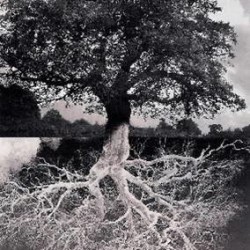
The root system represents 30 – 50% of the biomass of a large tree and may reach many metres into the soil to draw up water and nutrients for regrowth
Bishop Chiwanga wrote to us
The tree stumps never cease to excite me, and I was delighted to find the same with others after the tree stump thing dawns in their minds … Stumps were not quite visible where we began. When we got to a typical tree stump with a few shoots I could not resist my excitement. Apparently the group noticed my radiant face and asked for the reason. I explained the secret of FMNR- to release the underground forest to come to the surface, and that living stumps were the outlets for the underground forest to mushroom. A lady remarked, “Ahaa! Is that what we should be looking for, and I was doing a horrible thing to burn tree stumps in my farm so that later I could dig them out for firewood.” We were standing in her farm. From then on we were like game hunters, chasing living stumps.
The essence of FMNR is that by pruning the regenerating shoots from a live stump, the water and nutrients from the large root system can energise the remaining shoots to grow rapidly.
The action started immediately. He organised training on his own farm, demonstrating how the living stumps could be found and how to prune the many shoots down to three to five so that they could grow strongly. After demonstration, each participant had the opportunity to prune regrowth.
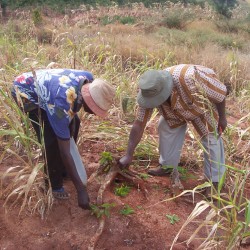
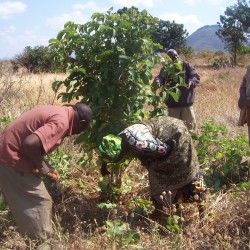
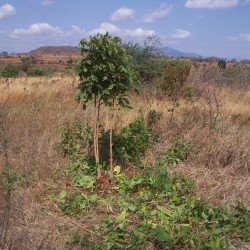
Bishop Chiwanga is the chairman of the Lead Foundation which now plans to train a group 10 FMNR champions in each of 44 villages to demonstrate and follow up FMNR and multiply their efforts by identifying, forming and training other groups.
World Vision Tanzania’s FMNR Champion, Idda Ikombe, has been working with the LEAD Foundation to train champions, identify gaps and add technical expertise.
We hope to share more of the developments in Tanzania in the near future.
Until next time
Liz
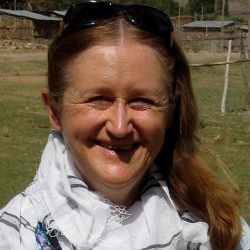
Liz is travelling in Africa with her husband Tony Rinaudo, a natural resource management advisor with World Vision Australia, encouraging communities, non-government organisations, governments, research organisations and others to scale up reforestation over large areas.
